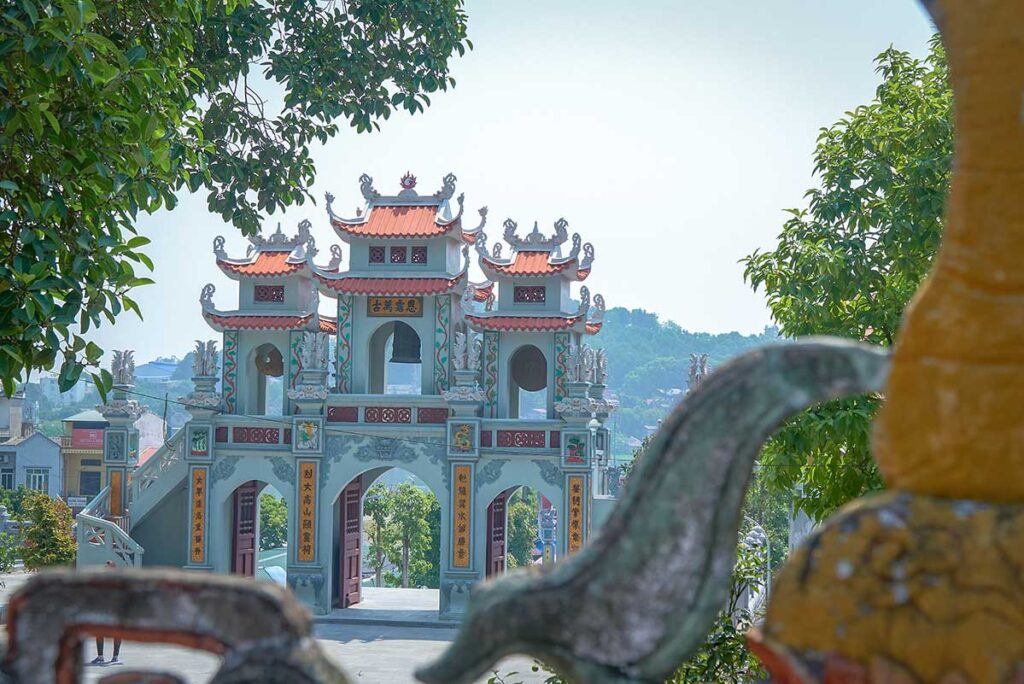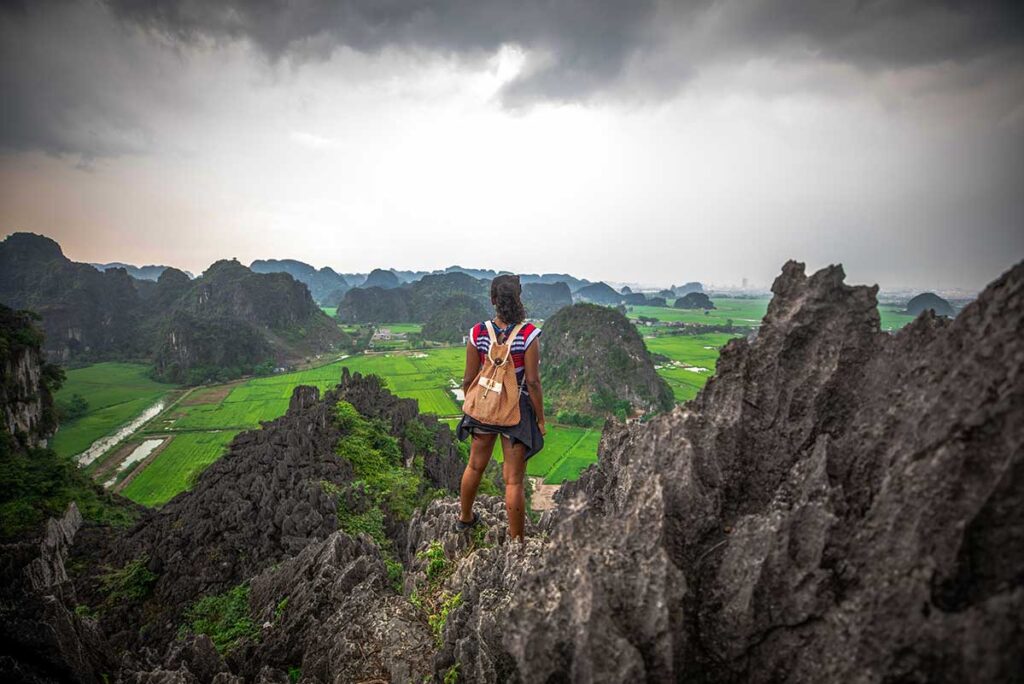What is Ba Chua Kho Temple known for?
Ba Chua Kho Temple is best known for its unusual ritual of “borrowing money” from the spirit world to ensure prosperity, good fortune, and business success in the coming year. This symbolic borrowing—done through written prayers and offerings—draws thousands of visitors each year, especially during Tet and the weeks that follow, peaking on the 14th day of the first lunar month.
The temple has become a pilgrimage destination for entrepreneurs, families, and spiritual believers who seek blessings for financial luck and stability. While many see it as a sacred place of cultural tradition, some Vietnamese criticize the increasing commercialization—where spiritual faith can feel overshadowed by elaborate offerings and services with unclear pricing.
Who was Ba Chua Kho? (The Legend & Historical Role)
Ba Chua Kho, whose name translates to “Lady of the Storehouse,” is a semi-mythical figure believed to have lived during the Ly Dynasty and died around 1077. According to legend, she was a gifted woman responsible for managing food supplies and logistics during the resistance against the invading Song army. Her role in organizing provisions for the troops stationed at the Nhu Nguyet River made her a symbol of resourcefulness and prosperity.
She died while on a supply mission and was later honored by the king and community. A temple was built at the site of the old royal warehouse on Kho Mountain, where she was worshipped as a protective and generous deity. Today, she is revered as a spiritual guardian of wealth, especially by Vietnamese people seeking financial luck and business success. For locals, she embodies abundance and smart management—but for international visitors, her story offers a window into Vietnam’s unique blend of history, folklore, and spiritual practice.
Architecture & Atmosphere
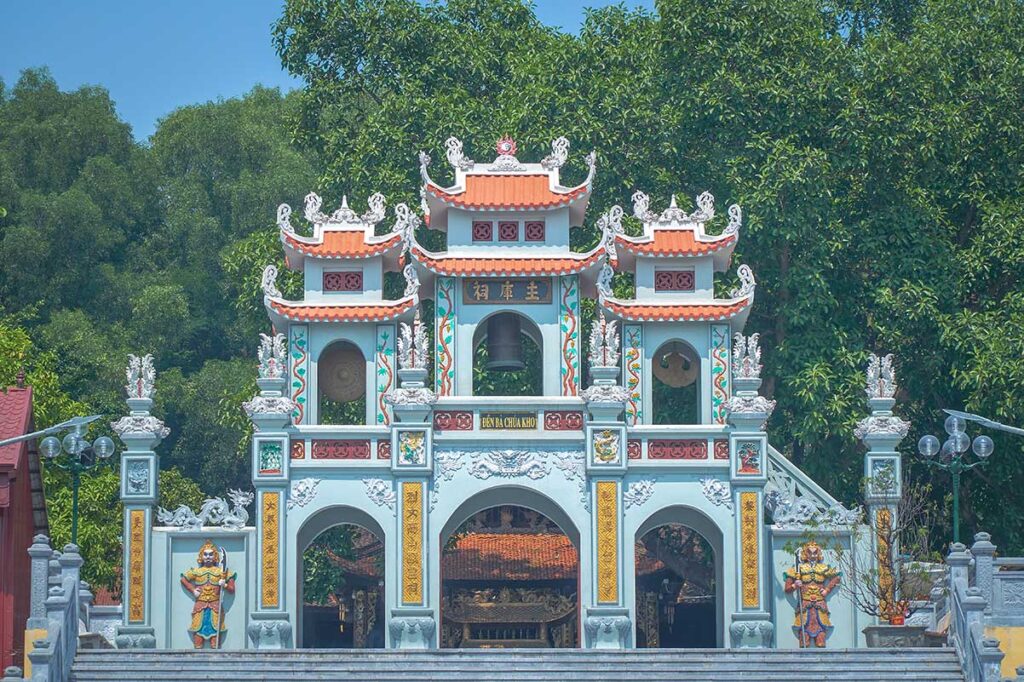
Ba Chua Kho Temple is a small but atmospheric complex set on the slope of Kho Mountain, overlooking a peaceful lake. The current temple was rebuilt in 1998, but it follows traditional northern Vietnamese design, with curved tiled roofs, wooden pillars, and ornate carvings.
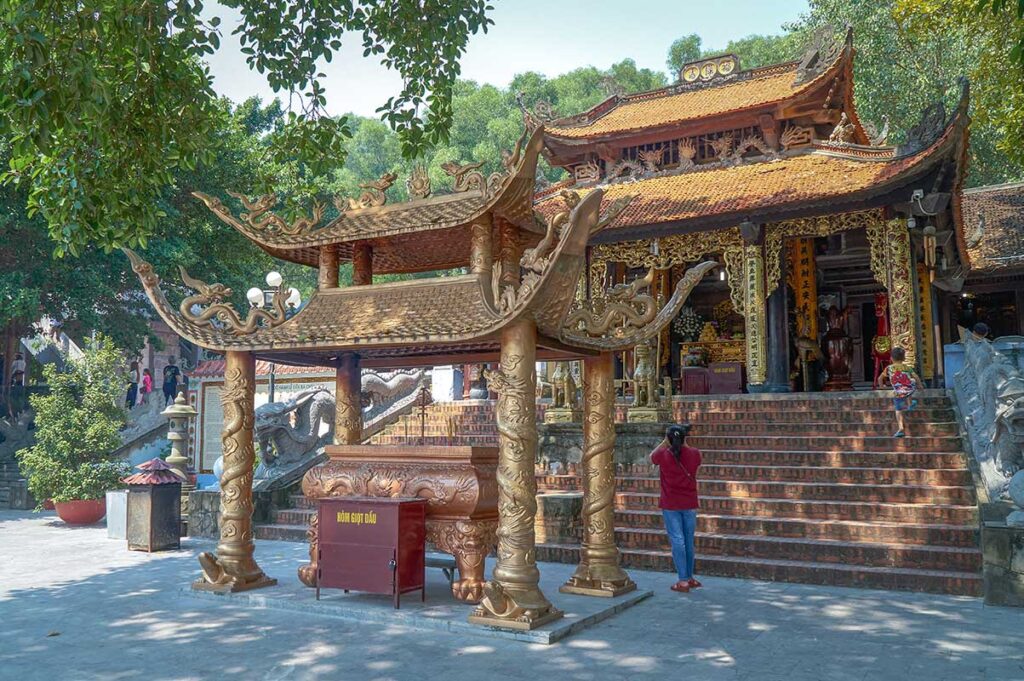
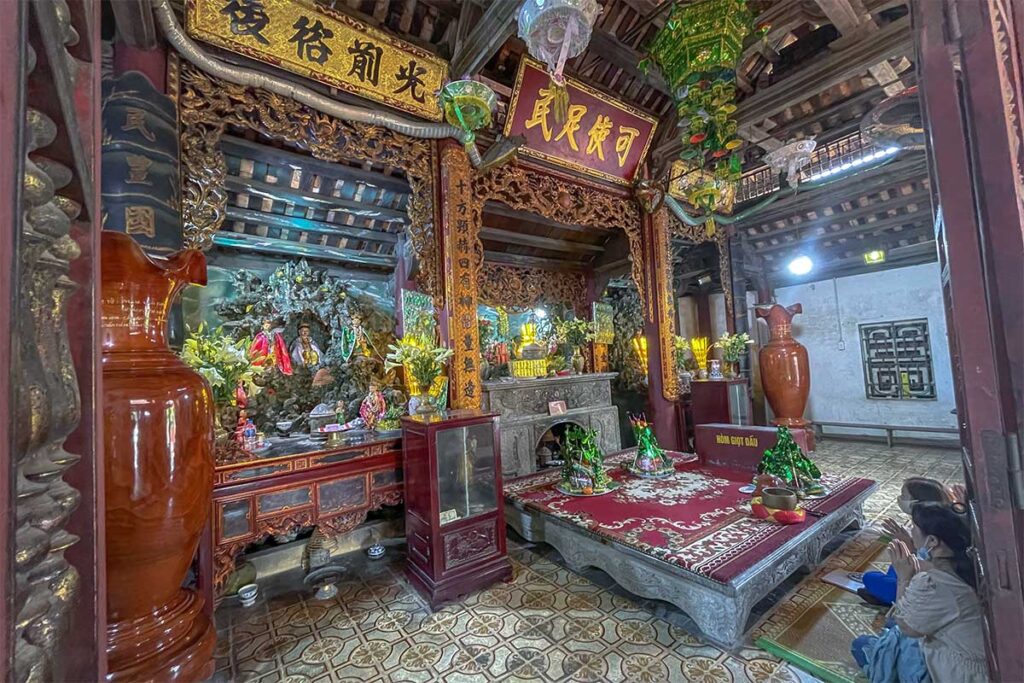
You’ll see symbolic animal motifs like dragons, phoenixes, and tigers carved into the beams and altars — all associated with protection and power. The temple layout includes a front courtyard, main ceremonial hall, and a quieter rear section where locals often light incense in silence. There’s also a communal area and lakeside rock features that add to the spiritual atmosphere.
What to expect when visiting Ba Chua Kho Temple
Ba Chua Kho Temple has a lively, sometimes chaotic atmosphere, especially during the first month of the lunar year. The air is thick with incense smoke, prayers, and movement as locals come to make offerings, “borrow money,” or pay spiritual debts.
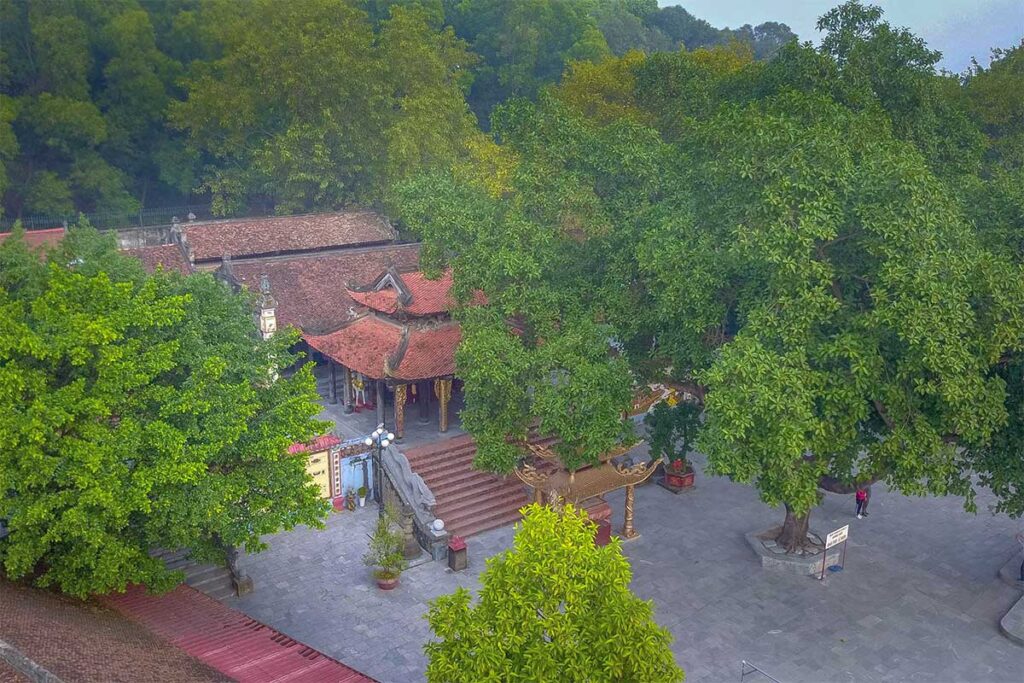
The temple sits on a hillside with shady trees, a small lake, and various shrines. It’s an outdoor space with a central main hall, but most activity happens around the courtyard and surrounding walkways. You’ll find vendors selling incense, flowers, snacks, and ceremonial trays at every step.
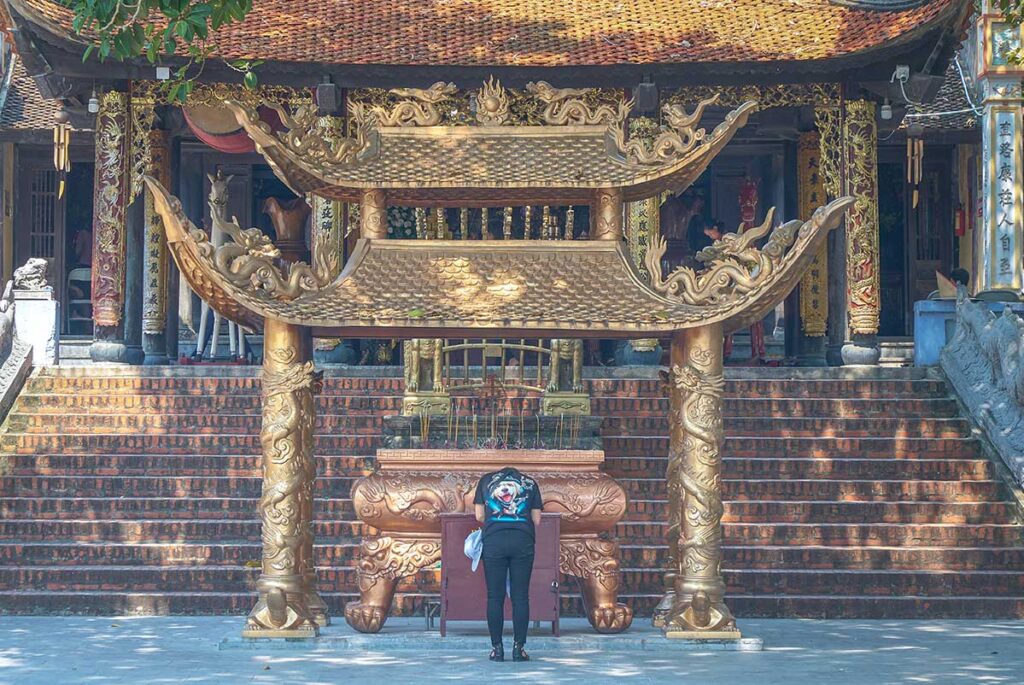
Be prepared to be approached by women offering to guide your prayers or help prepare offerings—for a fee. This is common for Vietnamese pilgrims, not really necessary for foreign visitors unless you want to take part in the ritual experience. If you just want to walk around and observe, no one will stop you.
The rituals and offerings can be hard to follow if you’re not familiar with Vietnamese spiritual customs, but that’s part of the experience. Even outside the main festival day (14th of the first lunar month), the temple remains busy throughout the lunar new year period. If you’re visiting during that time, expect noise and queues.
The “Borrowing Money” Ritual & What it costs
The most famous tradition at Ba Chua Kho Temple is the symbolic act of “borrowing money” from the goddess to wish for a prosperous year. It’s a deeply rooted cultural practice, especially popular among Vietnamese entrepreneurs and small business owners during the Lunar New Year.
The idea is to write a short note or prayer asking for a specific amount of money and a reason (often related to work or business), with a promise to return the borrowed “spiritual capital” the following year. Locals often prepare this in advance or get help from women near the temple who offer to guide the ritual—for a fee.
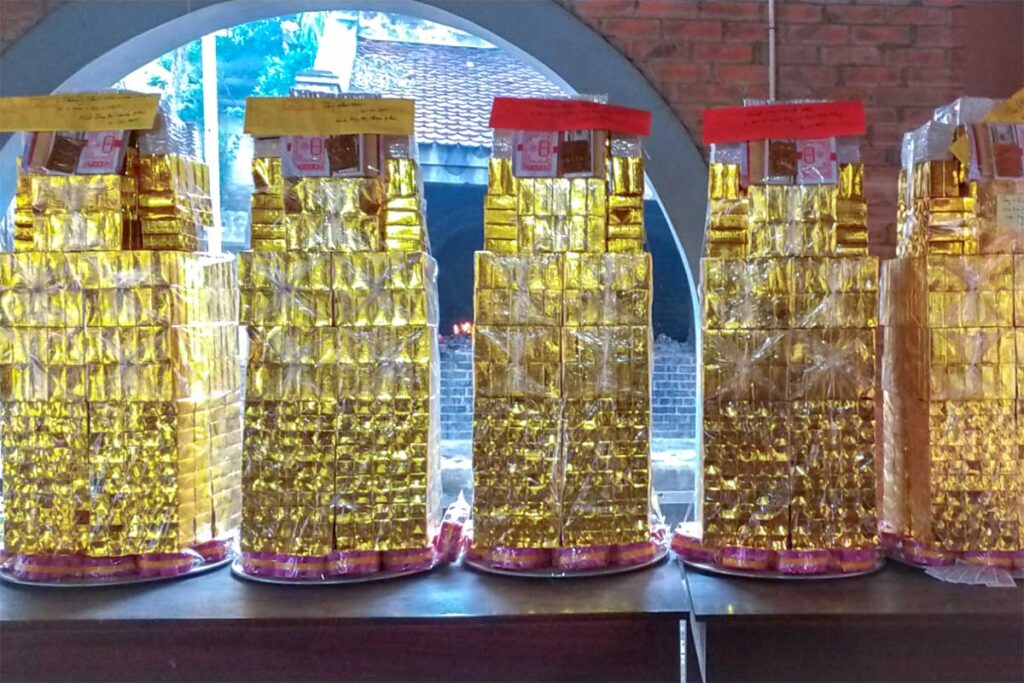
As a foreigner, you’re not expected to take part in this ritual, but you’re welcome to observe. It’s an interesting cultural moment, though it can feel quite commercial. The temple grounds are packed with vendors selling ready-made offering trays, food, incense, and paper money.
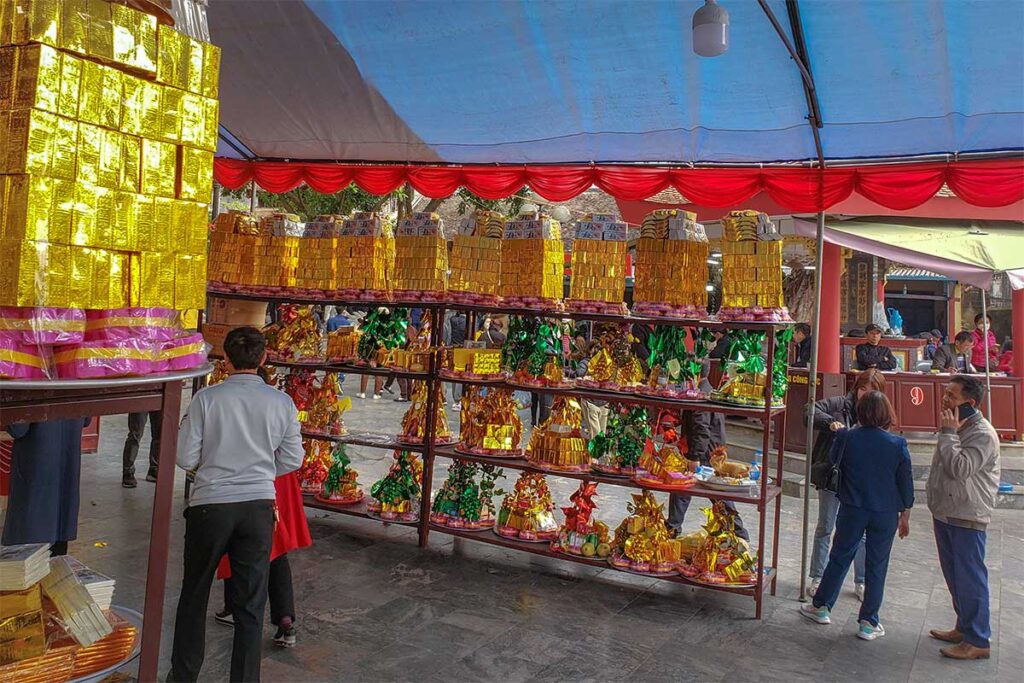
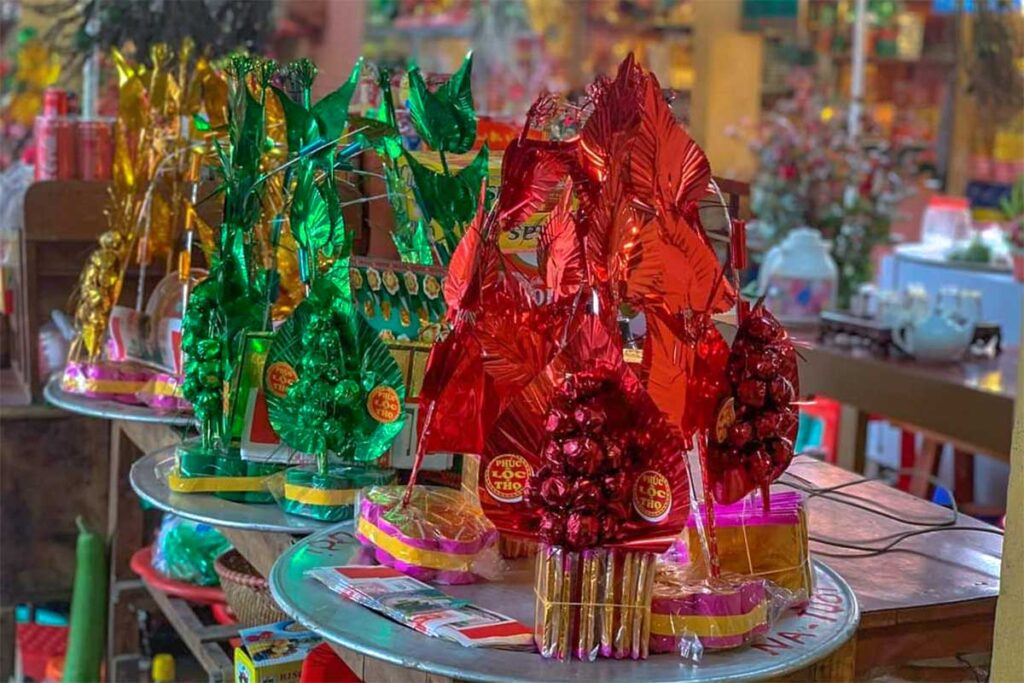
There’s no entrance ticket, but here’s what people usually spend:
- A basic offering tray: 200,000–500,000 VND
- Add-on prayers for health, family, or business: ~300,000 VND per set
- Personal prayer help from a local woman: 100,000 VND and up
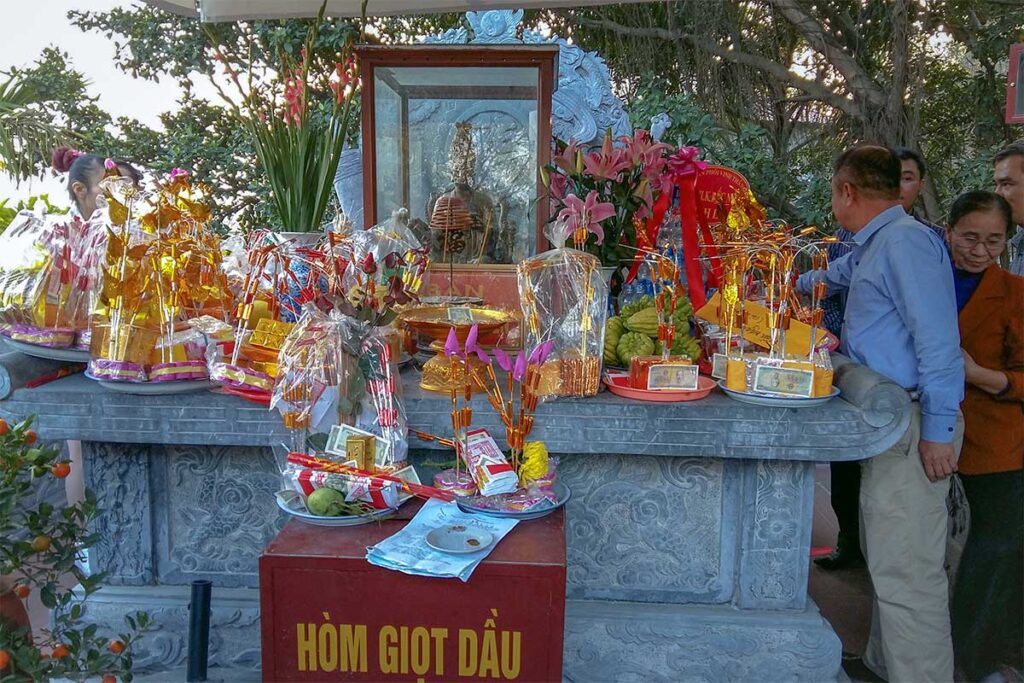
You can politely decline if you’re not interested. And if you do want to join in, it’s fine to negotiate prices—this is expected. Bring cash, as no one accepts cards. For most foreign travelers, just walking around, watching the activity, and taking in the atmosphere is enough to get a sense of this fascinating Vietnamese tradition.
Location & How to get there
Ba Chua Kho Temple is located on Kho Mountain in Co Me Village, just outside Bac Ninh City, about 50 km northeast of Hanoi. It’s a popular day trip during the Lunar New Year, especially with Vietnamese visitors.
- Private car or tour: The most convenient and flexible option, especially during the busy first lunar month.
- Self-drive / motorbike: Takes about 1 to 1.5 hours from Hanoi. The route is fairly straightforward if you follow Google Maps.
- Public transport: Take a bus or train to Bac Ninh City, then use Grab or a local taxi to reach the temple.
Parking is available near the temple, but it gets very crowded during festival season — expect long walks from the parking lot.
Tips for visiting Ba Chua Kho Temple
- Avoid weekends and festival peaks – especially mid-morning during the first lunar month.
- Bring small denominations (5,000–20,000 VND) for donation trays and incense.
- Go with a local or guide if you’re curious about the meaning behind the rituals.
- Dress modestly and wear comfortable walking shoes — expect to climb stairs and stand in line.
- Don’t feel pressured into paying for prayer services or offerings you didn’t ask for.
- No photography is allowed inside the inner halls.
- Toilet access is basic and not always easy to find — plan ahead.
Is Ba Chua Kho Temple worth visiting?
Yes, if you’re interested in Vietnamese folk religion, spiritual business rituals, or how belief systems shape local culture. While the current temple isn’t ancient or architecturally unique, the story and tradition behind it make it one of the more unusual places to explore — especially as part of a larger trip around Bac Ninh or the countryside.
No, if you’re looking for a quiet temple experience or something visually impressive. Without the context of the ritual, it can feel like a small and very crowded local shrine. It’s more about observing culture in action than ticking off a sightseeing highlight — and best visited with someone who can explain what’s going on.
